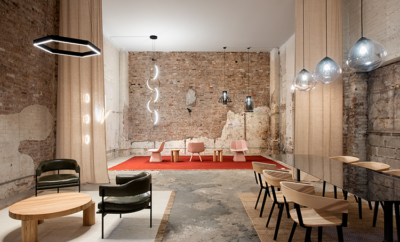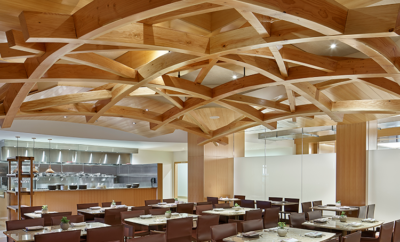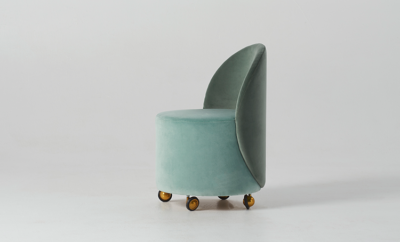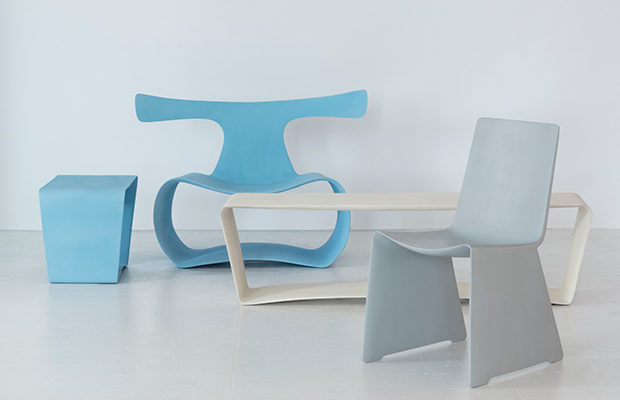 From left: Patrick Naggar‘s Amalfi outdoor side table, 2017; Amalfi outdoor chair, 2017; Ischia table bench, 2018; Positano chair, 2017; all in resin. All images by Antoine Bootz Photos.
From left: Patrick Naggar‘s Amalfi outdoor side table, 2017; Amalfi outdoor chair, 2017; Ischia table bench, 2018; Positano chair, 2017; all in resin. All images by Antoine Bootz Photos.
Design
Pucci Outdoors
SCULPTED OUTDOOR FURNITURE is not something you’ll likely encounter on a normal shopping expedition. But Ralph Pucci may be changing the landscape.
Ralph Pucci International, with showrooms in Manhattan, Los Angeles, and Miami, is known for its portfolio of top European and American designers who create handmade pieces for the select few able to afford them. But the company has hit upon a novel approach, proving that there can be something new under the sun—or indoors, for that matter, since the pieces can also work inside the house—in the dining or living room.
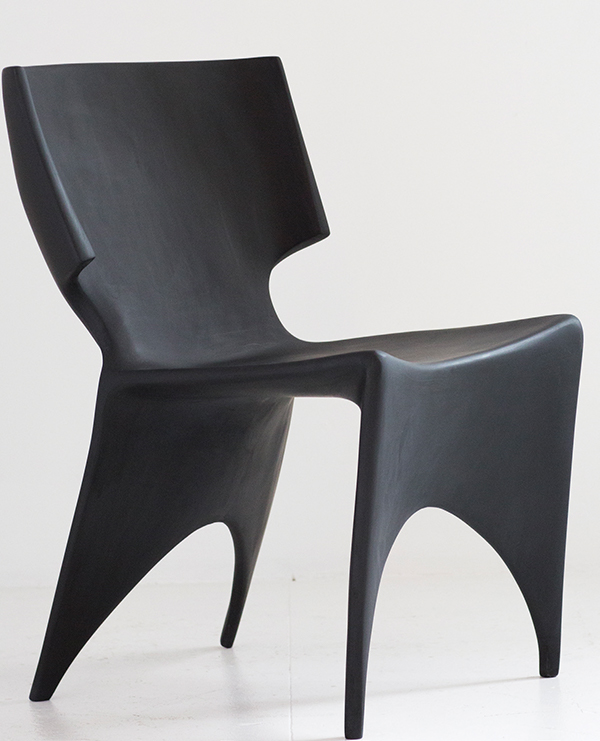
Paul Mathieu’s Ella chair in resin, 2017. All images by Antoine Bootz Photos.
Pucci has taken its expertise in crafting mannequins to change the business on which the company was originally founded in the 1950s and turned that skill into a whole new enterprise. It began with a fiberglass chair designed by Vladimir Kagan that Pucci introduced nine years ago. Originally, he had wanted to make the chair in a more luxurious material, but, working with Kagan, Pucci ultimately went ahead with the original fiberglass, which proved a great success. The matter then rested until two years ago, when he and one of the artists he frequently works with, Patrick Naggar, the award-winning French architect and designer, started discussing the possibility of creating sculptural outdoor furniture after having collaborated on such projects as the Nile mannequin and several bronze works. “It was something unique that we weren’t taking advantage of,” Pucci says.
So far, the company has introduced two outdoor chairs by Naggar: Positano—at first glance, a seemingly straightforward seat, but it deviates from the norm with swooping curves and seductive angles. His other piece, the Amalfi chair delves further into fantasy, with extended ears sprouting from the back and a silhouette that seems to billow. This piece has an accompanying side table that can also serve as an ottoman, and there’s also a bench.
Another new offering is French designer Paul Mathieu’s Ella chair, which feels aerodynamic with its subtly sexy curves. More pieces by Naggar and Mathieu are on the way, with many other designers in Pucci’s stable lining up to take their place in the sun. The pieces are all made in the same location where the mannequins are produced: Pucci’s three-story headquarters, with showrooms, offices, and a studio and factory, on West 18th Street in Manhattan. Everything is done by hand. First, the piece is sculpted in clay by Pucci’s longtime mannequin artist, Michael Evert. It is then cast in plaster, from which a master mold is made. The material used is a type of resin in which the pigments are blended in by hand in Pucci’s workshop, making the process unique to the firm. Finally, the pieces are sanded.
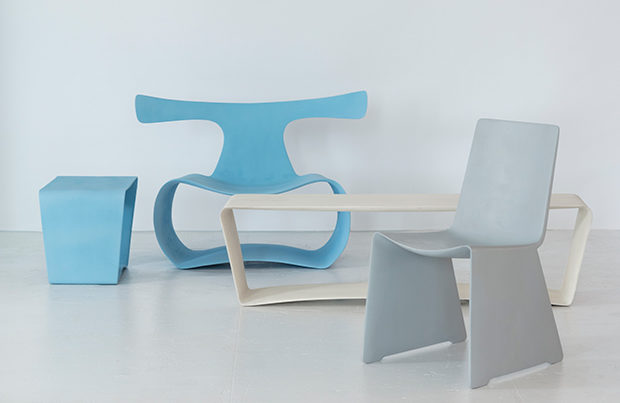
From left: Patrick Naggar‘s Amalfi outdoor side table, 2017; Amalfi outdoor chair, 2017; Ischia table bench, 2018; Positano chair, 2017; all in resin. All images by Antoine Bootz Photos.
Perhaps the most unusual thing about the collection is the price. While hardly inexpensive, the pieces are way below Pucci’s usual retails. The Positano chair sells for $1,800; a set of four is $6,480. “Everyone wants affordable design now,” Pucci says, adding that you can have that if you use less precious materials.
His son, Michael Pucci, who has been at the family firm since 2013, has furnished his own apartment with some of the new designs. He claims it has opened up a whole new audience for the company. Ralph Pucci is not stopping here, though. He is using the same processes to offer a custom sculpting service to customers who want likenesses created of their near and dear. For him, the techniques and material used for the chairs are tools for developing an entirely new business.


